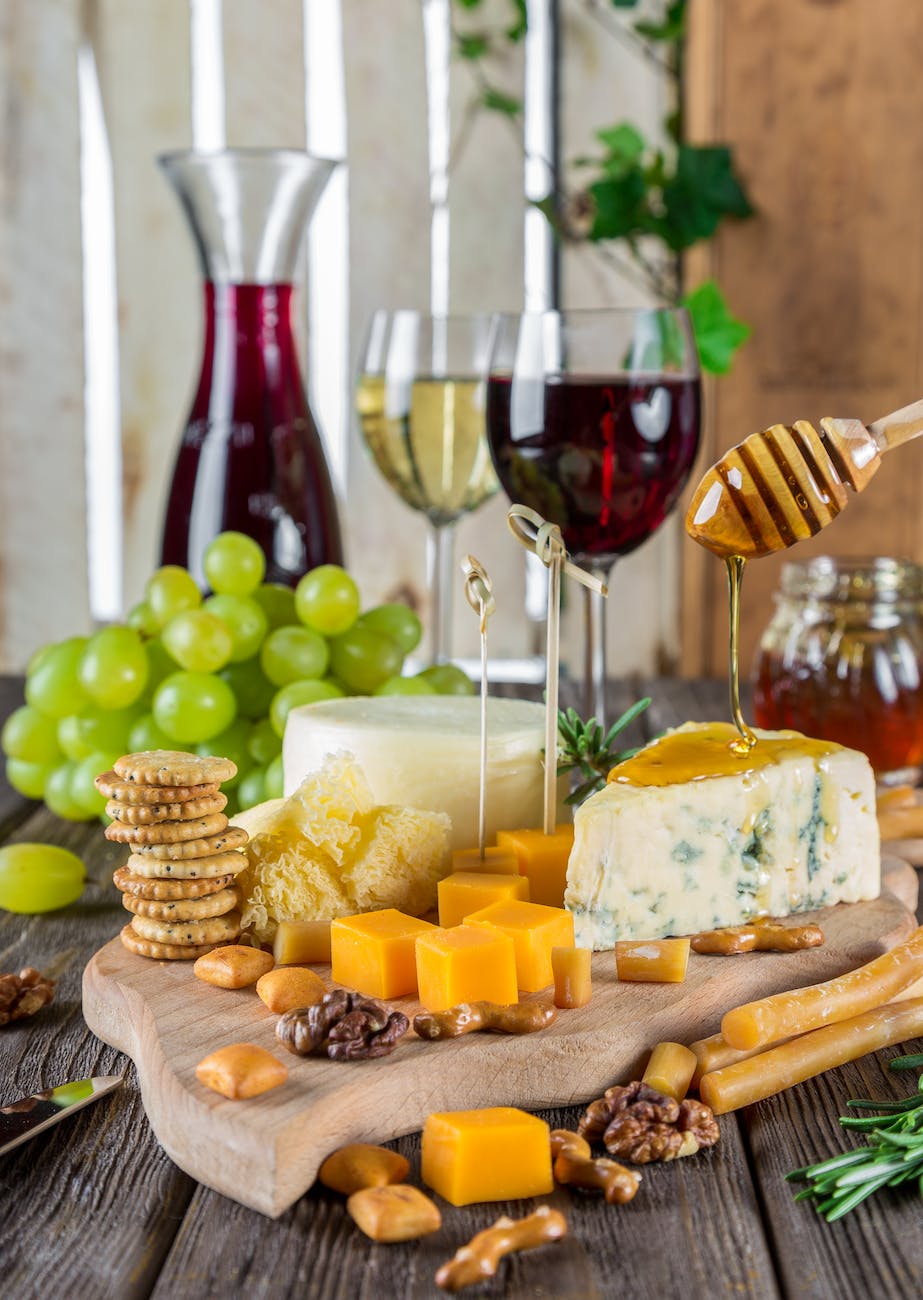The Perfect Pair? Best Wine and Cheese Pairings
Planning a wine and cheese gathering or creating your first charcuterie board? Matching the perfect pair is critical and can mean the difference between a sophisticated and tasteful soiree or an unpalatable party that ends poorly. Read on for tips and our recommendations to make your shindig a success.
What Should I Consider When Pairing Wine With Cheese?
Like most wine pairings, choosing the right cheese for the vintage requires you to consider several factors, including:
Age and Potency
Young cheeses tend to have delicate flavors, while aged cheeses tend to have bolder aromas and savory tasting notes. Bloomy rind cheeses (those with a soft, fluffy, white rind like Camembert and Brie) retain earthen flavors, while aged cheeses will take on a nutty taste. As for blue cheeses, mold in their veins makes them more aromatic.
So, what does all this mean? Much like cheese, wine can be delicate or bold depending upon the grapes and when they are picked, how the wine is aged and for how long, the winemaking process, and more. As such, younger wines with light, fruit-forward flavors match well with young cheeses, while older wines that are full-bodied and rich pair beautifully with aged cheeses.
Sweet Goes With Salty
Have you ever paired a salty cracker with a slice of sweet apple? Delicious, right? That’s because salty and sweet flavors balance each other out, so pairing a sweet wine with a salty cheese makes for a delicious culinary combination.
Similar or Different Textures
Combine a buttery Chardonnay with a creamy Brie and get rave reviews from your guests. Conversely, a glass of bubbly Prosecco tickles the palate and is sublime when served with a rich Camembert.
Same Terroirine
Cheeses and wines that share terroir possess complementary flavors. For example, the Loire Valley is noted not only for its wines but also for its flavorful goat cheeses. You can’t possibly go wrong serving a Sainte-Maure de Touraine cheese with a light Bourgueil wine.

Which Wines Go With Which Cheeses?
Dry to Sweet Wine
Enhance the flavors of dry to sweet wines with young soft cheeses. Try a dry Sauvignon Blanc with Mozzarella or sweet Moscato with Camembert. Jazz up Brie with a dry Rosé or pour a beautiful Beaujolais to complement your Chèvre cheese.
Light Bodied Wine
Stinky cheese is a washed-rind cheese with a powerful smell and a nutty or buttery flavor, such as Limburger or Livarot Munster. These pair particularly well with light bodied wines that have delicate aromas so that the wine complements the cheese. Pair stinky cheeses with red Burgundy or Pinot Noir.
Medium Bodied Wine, Sparkling Wine, and Aperitif Wine
Chardonnay, Champagne, or Merlot balance well with semi-hard and medium-aged cheeses. These wines’ acidity and tannins work well because they won’t overpower the flavor of cheeses such as Havarti, Edam, or Monterey Jack.
Full Bodied Wine
Full bodied wines like Burgundy or Bordeaux are sublime when paired with hard, aged cheeses. Aged Gruyere is mouthwatering with a glass of Cabernet Sauvignon, while you’ll want to serve the Asiago cheese with a lovely glass of Nebbiolo.
Port and Sherry
Blue cheeses are piquant and salty, so they need to be balanced with full-bodied, sweet wines like a Port or Sherry. Serve Gorgonzola with red Port or Roquefort with Oloroso Sherry for the best flavor combinations.
How To Make a Fabulous Charcuterie Board
Now that you’ve chosen the ideal wine and cheese combinations, it’s time to finish putting together your charcuterie board. Remember, the foods you add should also complement the wine and cheeses you’ve chosen.
- Cured meats. Salami, prosciutto, ham, chorizo, or summer sausage are delicious additions.
- Fruit. Fresh fruit also tastes great with cheeses, especially grapes, strawberries, apples, and pears.
- Dried fruit. Dried apricots, cherries, figs, and mango are always a sweet treat.
- Crackers or crostinis. Choose a variety here, from thin, toasted crostinis to pita crackers.
- Jelly or jam. Try something out of the ordinary like pepper jam or fig butter to spread on the crackers.
- Pickled items. We’re thinking olives, dill pickles, or cocktail onions.
- Dips or spreads. Vegetable dip, hummus, or condiments such as mustard are a nice addition.
- Vegetables. Crisp, raw vegetables like celery, carrots, and broccoli add crunch.
- Nuts. Almonds, pistachios, and cashews add salty goodness.
- Gourmet chocolate. Both dark and milk chocolate heighten the flavors of your wine.
Add or subtract as much as you’d like to create a tantalizing hors d’oeuvre tray or a delightful meal of finger foods with divine wines and cheeses.
Carol
Information sourced by the author for luxuryactivist.com. All content is copyrighted with no reproduction rights available. Images are for illustration purposes only.
